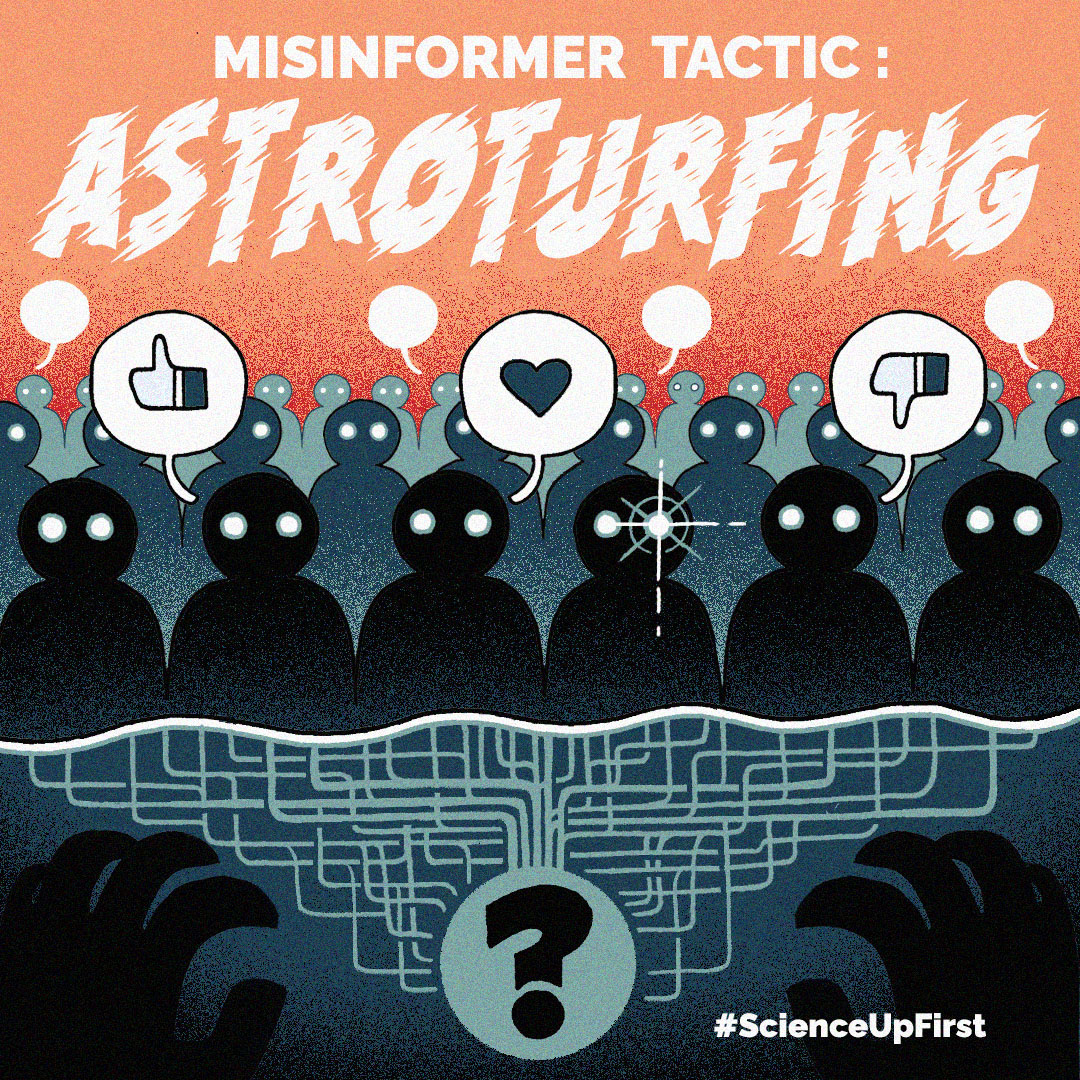Click on the sharing buttons to link to the post in your own tweet, Facebook post, email, or even WhatsApp message.
This post was vetted by experts, so you can be confident it’s accurate.

Why hello Username573927561! Great to see you again! You’re definitely a real person whose opinions I should take seriously…
Astroturfing is a practice where a message appears to have lots of grassroots support, BUT that support is actually being orchestrated by one organization or individual. The name comes from the brand of synthetic ground cover made to look like grass: AstroTurf. It looks real and natural, but it’s actually fake and artificial.
Astroturfers can use this tactic on social media, masking their identity and operating via many accounts and personas. This process can also be automated via bots. For example, twitter bots are a major source of climate misinformation.
This tactic can be used online to spread misinformation. For example, one analysis found that fear-mongering tweets about vaccines were spread not only by individuals but by coordinated networks involved in political astroturfing.
Remember, not everything you read online is trustworthy. Make sure you’re getting your news from reliable sources.
Thanks to Jordan Collver for collaborating with us on this post. Jordan is an illustrator and science communicator specializing in using the visual and narrative power of comics to explore themes of science, nature, and belief.
We’re working on a series of misinformer tactics with Jordan so stay tuned for more.
Check out his work on his website and on Twitter (@JordanCollver)
Share our original Tweet!
Why hello Username573927561! Great to see you again! You’re definitely a real person whose opinions I should take seriously…
— ScienceUpFirst | LaScienced'Abord (@ScienceUpFirst) December 14, 2021
Before you leave your comment, which you totally came up with independently, have you ever heard of astroturfing?
🧵 [1/3]#ScienceUpFirst pic.twitter.com/IyfA6HjTQW
View our original Instagram Post!
